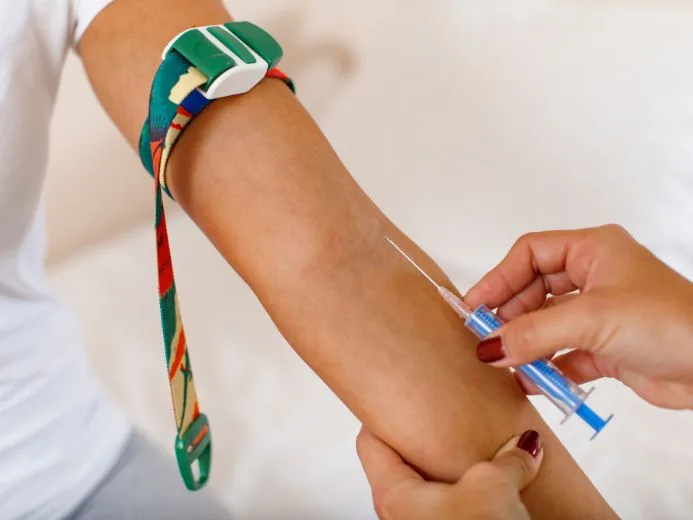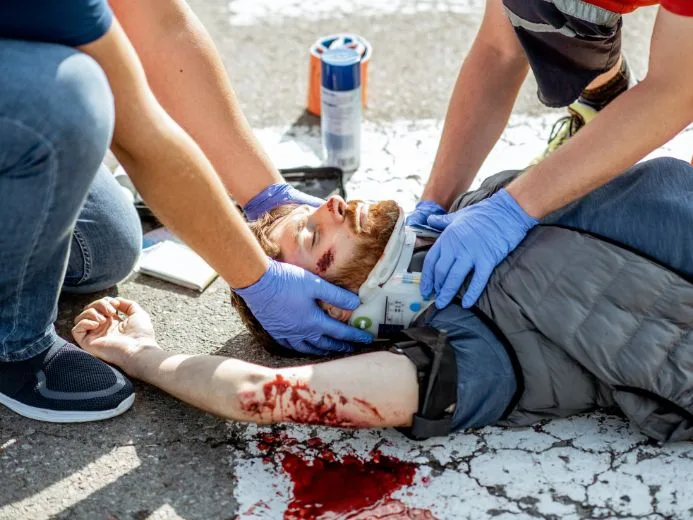In the realm of medical science, where the old meets the new, a tourniquet stand as a testament to time-honored practices in emergency care. From ancient battlefields to modern operating rooms, these devices have saved lives by controlling bleeding. The first case of the use of a tourniquet has been reported in the battle of Flanders in 1674. These tourniquets have also been reported to be used in Alexander the Great’s military campaigns.
This guide delves into the when, why, and how long tourniquets can be used, revealing their critical role in today’s medical and trauma scenarios. Discover the timeless significance of tourniquets and how they continue to be a cornerstone in life-saving medical interventions.
What does a tourniquet do?

A tourniquet is a medical device that is used in emergencies, surgeries, trauma care, and, post-operative rehabilitation to stop or reduce the blood flow from a limb or extremity. The blood flow is restricted with the help of the pressure applied by the tourniquet that helps to occlude the nerves which consequently helps to reduce or stop the blood flow. Ancient Romans have been reported to use tourniquets during amputations to control bleeding.
However, these tourniquets were made of bronze and leather and were different in appearance from the tourniquets that are used today. If the human body loses too much blood, it can cause severe complications and can also lead to death. For this reason, tourniquets are often an essential part of first aid treatment and help greatly to reduce blood flow till proper medical care can be provided to the patient.
Use of tourniquet in trauma care
Tourniquets are often used in trauma care as patients who suffer from major traumatic injuries by falls, vehicle collisions, or, gunshot wounds are at a higher risk of life-threatening blood loss.
These patients normally suffer from major injuries that cause the blood to lose extremely fast and the patient can lose a lot of blood before being provided medical care.
This can result in severe complications and can also result in death. Therefore, tourniquets are often used for physically traumatized patients to reduce or stop the blood flow and ensure safer patient transport.
Use of tourniquets in first aid

In emergencies, one of the most crucial problems which the emergency caregiver has to face is stopping the bleeding. If the patient loses too much blood it can cause complications and even lead to death. Due to this reason, it is highly significant to reduce the blood flow as soon as possible to save the life and limbs of the patients.
As it is often really difficult to hold continuous pressure by simply applying pressure, therefore tourniquets are used which help to continuously keep the pressure on the injured limb to control blood flow.
When is a tourniquet used?
Tourniquets are often used for surgical and traumatized patients. As the purpose of using a tourniquet is to stop the blood flow by narrowing down the veins of the limb, it is used in cases where it is of utmost importance to control blood flow to save the life of the patient. It is often used when only direct pressure cannot help to control blood flow or it cannot be applied for any purpose.
As extreme blood loss can cause death within minutes, it is highly significant to use a tourniquet immediately in such cases to ensure patient safety.
Apart from surgical and physically traumatized patients, tourniquets are also used by militaries, ambulance services, and, fire and rescue services.

For how long can you use a tourniquet safely?
Tourniquets, no doubt, are life-saving devices. But these devices must be used properly and with extreme care as applying a tourniquet for extended periods can cause skin injury, and injury to the blood vessels, nerves, and muscles. This can cause permanent damage and complications.
Therefore, it is recommended that the time of applying a tourniquet should be between 1.5 to 2 hours and must never exceed 2 hours. However, some techniques are used to reduce the chances of these complications. These techniques include
– Hourly releasing the tourniquet for 10 minutes
– Cooling the affected limb
– Alternating dual cuffs
How can a tourniquet save lives?
Tourniquets are indeed lifesaving medical equipment as they can help to stop blood flow. The prevention of loss of excessive blood in surgical and traumatized patients can help to save the patient’s life by reducing the chances of complications caused by excessive blood loss. These complications may include a danger to the patient’s limb or life. For this reason, tourniquets are often used in several settings including medical settings, militaries, ambulances, and, first aid treatments.
Conclusion
Tourniquets are ancient pieces of medical equipment that have been used since the Middle Ages. The purpose of using tourniquets is to prevent excessive blood flow in surgical or physically traumatized patients. There are several types of tourniquets that are used in different settings.
Apart from medical settings, tourniquets are also an essential part of first aid treatments, military campaigns, and, ambulance care. If tourniquets are not used, it can become extremely difficult to hold continuous pressure and stop blood flow. It becomes a lot more difficult in emergencies where it can be hard to deal with multiple injuries.
Therefore, tourniquets are an essential part of first aid treatment as they can help the first aid responders to take care of the patient instead of worrying about holding the continuous pressure on the injury to stop blood flow. The benefits tourniquets provide in controlling blood flow and avoiding complications make this equipment a lifesaver.

PhD Scholar (Pharmaceutics), MPhil (Pharmaceutics), Pharm D, B. Sc.
Uzma Zafar is a dedicated and highly motivated pharmaceutical professional currently pursuing her PhD in Pharmaceutics at the Punjab University College of Pharmacy, University of the Punjab. With a comprehensive academic and research background, Uzma has consistently excelled in her studies, securing first division throughout her educational journey.
Uzma’s passion for the pharmaceutical field is evident from her active engagement during her Doctor of Pharmacy (Pharm.D) program, where she not only mastered industrial techniques and clinical case studies but also delved into marketing strategies and management skills.

















